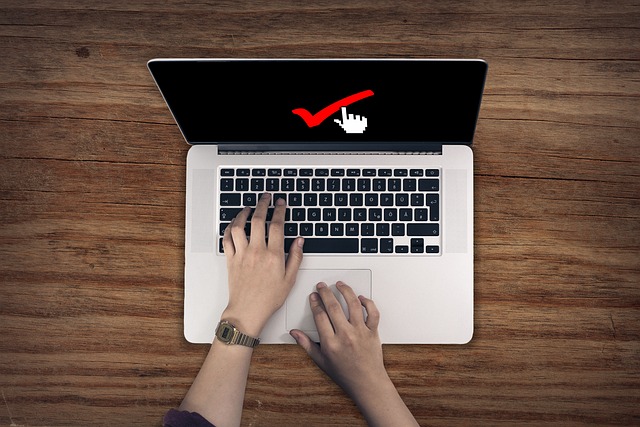Background checks are crucial for data security, requiring organizations to encrypt sensitive info, follow regulations, and control access. Protecting personal info involves reviewing checks, sharing only necessary details, verifying entities, and staying updated on privacy laws. Robust encryption, software updates, multi-factor authentication (MFA), and employee training minimize privacy risks associated with background checks, ensuring data protection.
Data security during background checks is paramount in today’s digital age. Understanding how to safeguard your information is crucial for protecting your privacy. This comprehensive guide delves into essential practices, common risks, and step-by-step strategies to ensure secure data handling. By implementing best practices for protecting personal information, you can mitigate potential threats and maintain control over your data during these checks.
- Understanding Data Security During Background Checks
- Protecting Personal Information: A Comprehensive Guide
- Best Practices for Safeguarding Privacy
- Common Risks and How to Mitigate Them
- Ensuring Secure Data Handling: Step-by-Step Strategies
Understanding Data Security During Background Checks

Background checks are an essential part of ensuring data security, especially in sensitive areas like hiring processes or access to confidential information. When conducting these checks, it’s crucial to understand and implement measures that protect privacy. This involves encrypting sensitive data during transmission and storage, ensuring compliance with data protection regulations, and implementing robust access controls.
By understanding the intricacies of data security during background checks, organizations can safeguard personal information from unauthorized access or breaches. It’s about creating a secure environment where privacy is respected and maintained, fostering trust among individuals whose data is being evaluated. This approach not only protects privacy but also strengthens the overall security posture of the organization.
Protecting Personal Information: A Comprehensive Guide

Protecting your personal information during background checks is a crucial step in safeguarding your privacy and security. It’s essential to understand what data is being collected, who has access to it, and how it will be used. When undergoing any form of check, whether for employment, housing, or other services, you have the right to know and consent to the process.
Start by reviewing the scope of the check and the companies involved. Check if the request is legitimate and ensure your data will be handled securely. Understand the types of personal information being sought, such as social security numbers, addresses, financial records, or medical history. Be cautious about sharing sensitive details unless absolutely necessary, and always consider seeking legal advice if you have concerns about privacy rights.
Best Practices for Safeguarding Privacy

To safeguard your privacy during background checks, it’s crucial to understand and implement best practices. Firstly, review all requested information critically; ensure only relevant and necessary data is shared. This minimizes the risk of exposing sensitive personal details that are not required for the check. Next, verify the legitimacy of the checking entity; reputable organizations adhere to strict privacy laws and ethical standards in handling such data.
Additionally, maintain open communication throughout the process. Ask questions about data usage, storage, and security measures in place. Consider using secure channels for data transmission and opting for encrypted storage options where available. Regularly update your security practices as privacy laws evolve, ensuring your data remains protected against potential breaches.
Common Risks and How to Mitigate Them

Data security during background checks is paramount to protecting individuals’ privacy. One of the primary risks lies in the unauthorized access and exposure of sensitive personal information, such as social security numbers, addresses, and employment records. To mitigate this, organizations must implement robust data encryption protocols, ensuring that all transmitted and stored data are scrambled, making it unreadable without decryption keys. Regular updates to security software and patches are essential to counter emerging threats.
Another common risk is data breach due to human error or malicious insiders. Training employees on data protection best practices, including recognizing phishing attempts and securing access privileges based on need-to-know principles, can significantly reduce this risk. Additionally, multi-factor authentication (MFA) adds an extra layer of security, making it harder for unauthorized individuals to gain access to sensitive data, thereby safeguarding privacy during background checks.
Ensuring Secure Data Handling: Step-by-Step Strategies

To ensure secure data handling during background checks, follow these step-by-step strategies:
1. Implement Strong Data Encryption: Encrypt sensitive information using industry-standard algorithms to protect it from unauthorized access. This is crucial for maintaining privacy and preventing data breaches during transmission or storage.
2. Secure Access Controls: Enforce strict access controls by limiting who can view or modify data. Utilize multi-factor authentication, role-based permissions, and regular security audits to ensure only authorized personnel can access sensitive information related to background checks.
3. Regularly Update Software: Keep all software and systems up to date with the latest security patches. Unpatched vulnerabilities can pose significant risks, making your data susceptible to cyberattacks.
4. Anonymize and De-identify Data: Where possible, anonymize or de-identify personal data to reduce privacy risks. This process removes identifying information, ensuring individuals cannot be re-identified even if data is exposed.
5. Conduct Comprehensive Training: Educate employees on data security best practices, including recognizing phishing attempts, creating strong passwords, and the importance of maintaining confidentiality during background checks.
